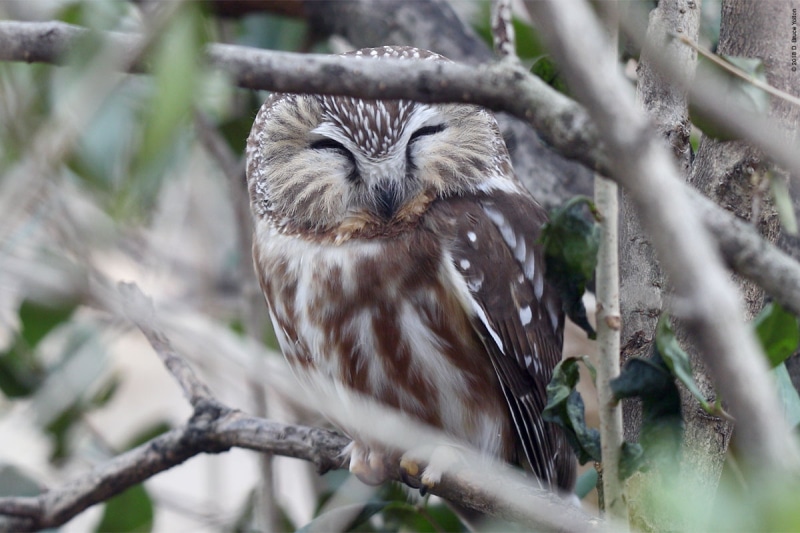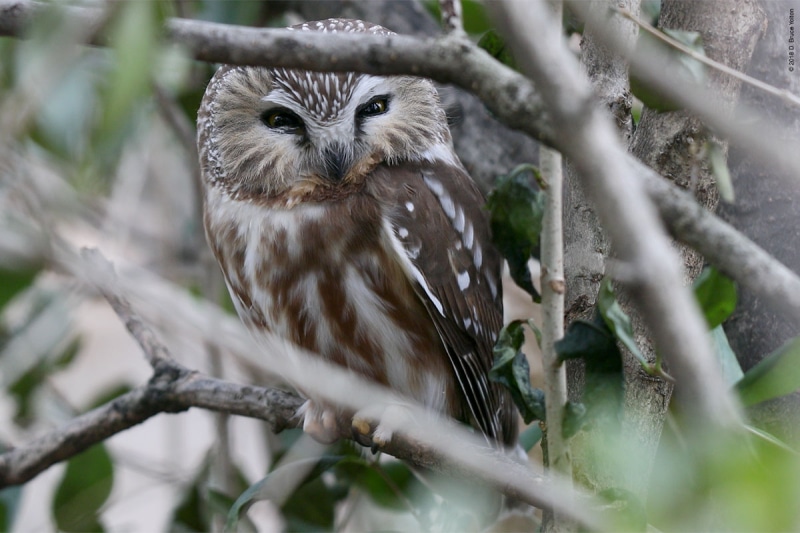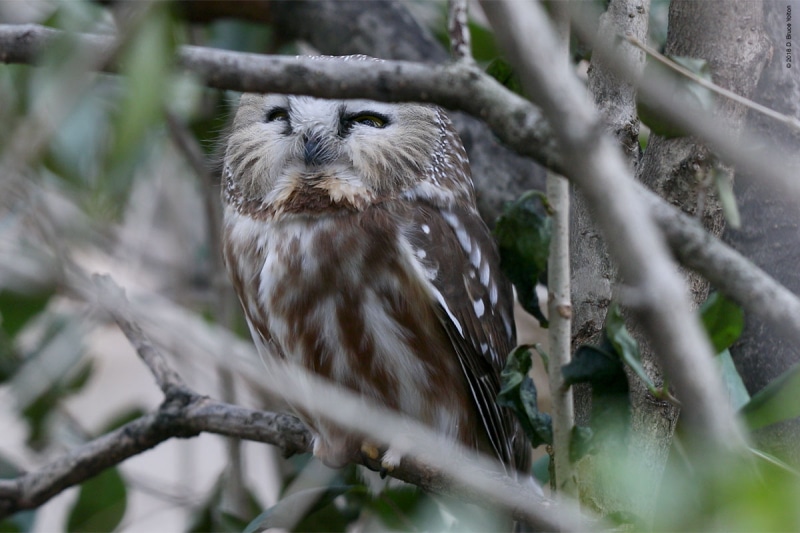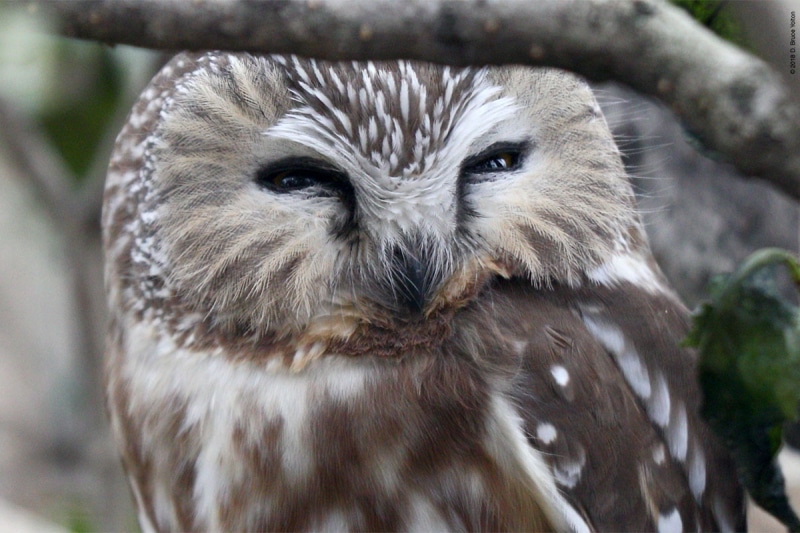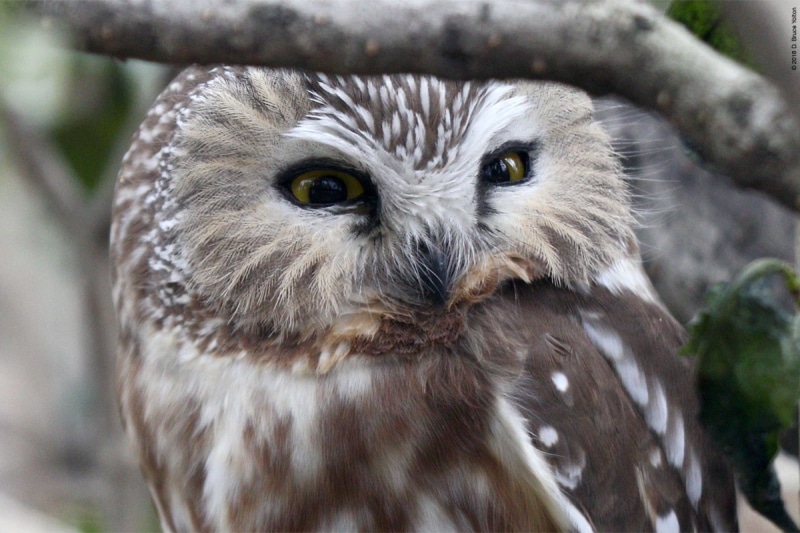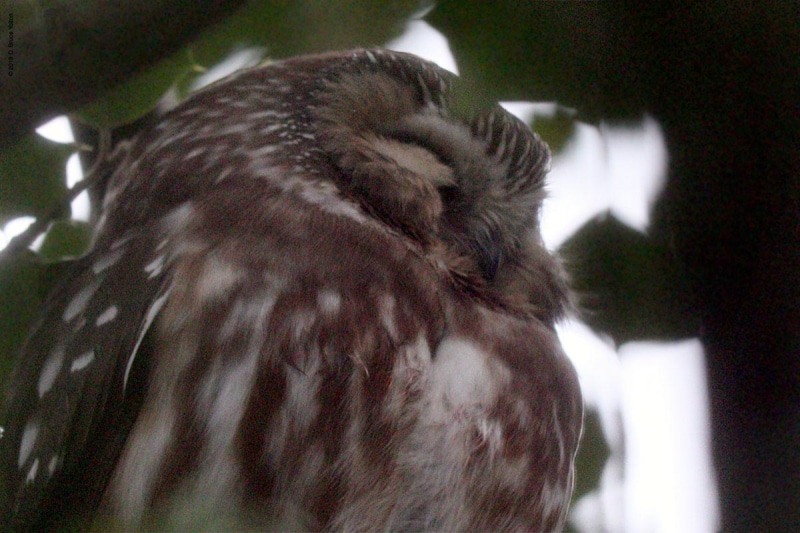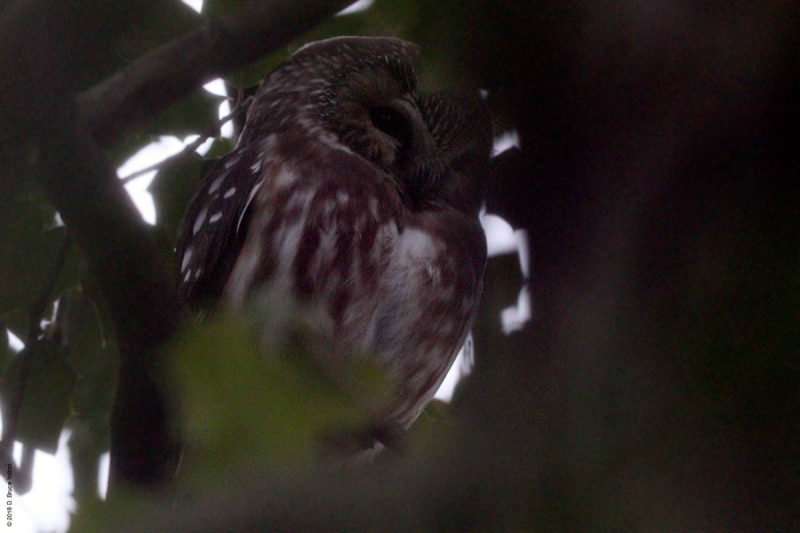Yesterday, we had two Northern Saw-whet Owls in Central Park. One was well hidden in a Holly tree and the other was in the open in a small tree at eye level.
Unfortunately the one in the open was being awoken by photographers when I arrived, who to get an unobstructed view, were going within a few feet of the owl, moving brush aside and talking loudly. For me if an owl is awake, there are no other birds/animals around and it’s not near dusk, then the bird watchers (including myself) are the problem. Bircdchick, Sharon Stiteler, wrote a nice piece How Close Is “Too Close” To An Owl in 2013 as a guest writer for 10,000 Birds.
I think it’s up to every bird watcher to decide their own limits. I’m not so worried about what each person decides. I just want everyone to consider what the impact of their bird watching and photography might be. Keep in mind that the Manhattan Bird Alert now has over 12,000 subscribers. While David Barrett is thrilled to has such a wide audience, it means that a single tweet about an owl’s location (especially when David includes a map) can now bring over 100 visitors to an owl in a day. So, think about your behavior in the context of 100 people doing the same thing or worse throughout the day.
I’d recommend visiting owls just before dusk rather than making a trip during mid-day. The owl will be getting up at this time and you’ll be able to see the owl naturally wake up, preen and you might get to see it fly out.
While I don’t think most owl locations should be reported, with social media and eBirds locations will end up leaking out. This puts pressure on the bird watching community to police itself by educating new birders about owl etiquette, only tweeting about an owls location when you know the bird won’t be disturbed and calling out our peers when in our excitement of seeing an owl, we get too noisy, too close or stay too long. This can be done in a friendly way. 99% of all bird watchers want to respect the birds they watch and will be open to a polite conversation about respecting the bird they’re watching. I like to reread, the American Birding Association Code of Birding Ethics every few months, especially the parts that remind experienced birders of their responsibility to educate others about ethics.
I managed this problem for myself yesterday by setting up a tripod with a less than an ideal shot, letting the camera record and walking thirty feet more away. I had lots of wasted footage, and a partially obscured view but for most of the time the owl stayed asleep. It woke up because of squirrels, titmice and a Red-tailed Hawk so with my camera rolling I got some nice images. I also asked new visitors to give the owl some space, and showed them good vantage points which allowed them to stay far from the owl but get good looks.
